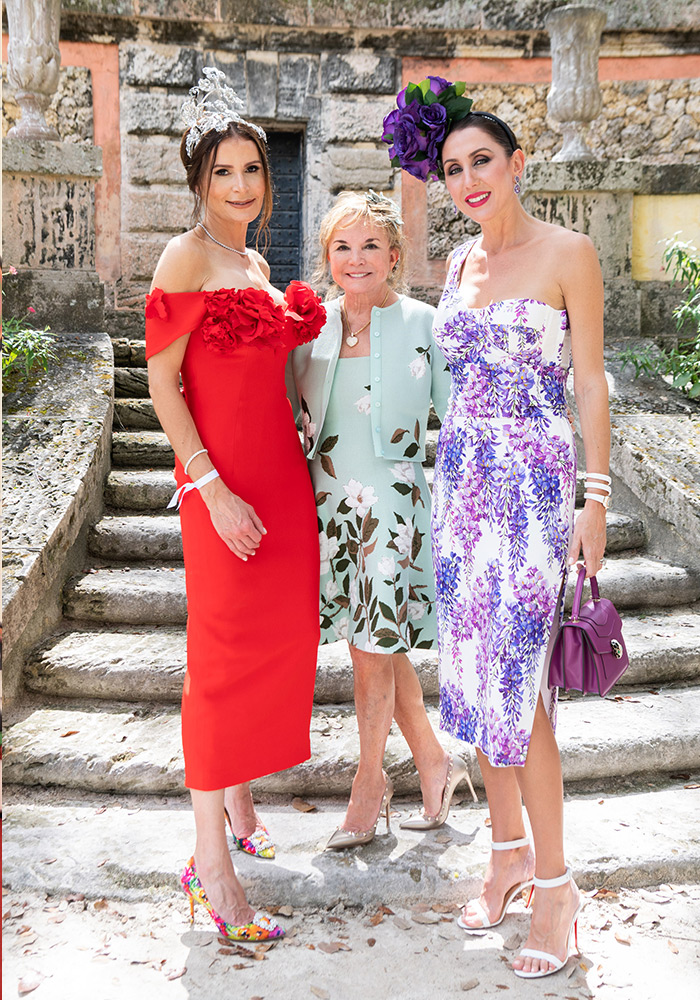To preserve grand past, Vizcaya ramps up for a growing risk to Miami’s future: Climate change
By ASHLEY MIZNAZI for the MIAMI HERALD


Built on the edge of Biscayne Bay about 100 years ago, the lavish Italian renaissance-inspired Vizcaya Museum and Gardens is one of the most picturesque properties in South Florida. It’s also one of the most vulnerable to storm surge and sea rise. After Hurricane Irma in 2017, Vizcaya spent months and millions of dollars to clear debris and repair the gardens — which sit about four feet above sea level — that were filled with five feet of saltwater. The pounding from waves was so powerful it actually left ripples behind in the sandy soil. The roof on the tea house pavilion was torn off, pieces of the stone barge were swept into the bay, walls and statues were knocked over and flood water got past the heavy hurricane glass doors into the museum’s café and basement.
It was wake-up call for the staff: Preserving Vizcaya’s grand past would mean taking steps to protect it from a future that will be increasingly influenced by the forces of climate change. Ian Simpkins, Vizcaya’s director of sustainability, said he will never forget gazing out at the lush gardens as Irma approached South Florida.
“I walked through the gardens thinking my 10 years of labor is going to be ruined,” said Simpkins, who has worked at Vizcaya for 16 years. “The thing that keeps me here is that we are always improving, looking at new challenges.” The challenge for Vizcaya and much of coastal South Florida is daunting. Irma, for instance, was far from a direct hit. The eye of the storm crossed Key West and struck Southwest Florida, so all the surge and flood waters that lapped ashore in Miami was from a storm some 100 miles away. After consulting with marine engineers, Simpkins discovered that it would take more than method to protect the estate’s 50 sprawling acres and a considerable amount of money. Because Vizcaya is run by a non-profit but owned by the county, the estate is able to tap into county funding for the projects.
PORTABLE DAM

One method is a piece of portable protection called a tiger dam — reinforced PVC vinyl tubing that can be stacked, joined together, anchored and filled with salt water. The flexible barrier was purchased with a $194,000 grant in 2019 from the Hurricane Loss Mitigation Program (HLMP) from the State Division of Emergency Management that Vizcaya matched with $115,140.
The museum has had two practice runs deploying the tiger dam, which takes about 12 hours and 10 to 12 people to fully inflate. With a garden management staff of just nine people, Simpkins said the plan is to use a combination of staff and contracted labor to get it deployed. “It’s quite an effort to put them together and get them deployed but considering the effort we would have to expend to get the gardens back to what they should be after flooding, there is no comparison,” Simpkins said.
In 2012, Vizcaya received a grant from the Florida Inland Navigation District to build a seawall on the north wall of property seven feet above mean sea level. That turned out to be an underestimate. “Our research indicated that [seven foot-tall walls] should be adequate for almost all storms, and almost five years later it was not only overtopped, but was overtopped to the point debris was being deposited in the gardens,” Simpkins said.
On the north side of the estate, aquarium glass panels will attach to the existing wall raising the height but maintaining the open atmosphere for visitors. The sea wall on the south side of the estate, which sit 20 to 30 feet from the bay depending on the tide, will be extended to nine feet using sheet pile and concrete fascia. This expansion of the wall, taking place this year, will use $260,216 from the Florida Department of Environmental Protection Resilient Florida grant program. The total project is budgeted at $528,609. Another project that will be underway this month is replacing the glass and adding hurricane shutters at all exterior windows of the historic Superintendent’s House and replacing loggia, a covered outdoor passageway, with a new hurricane rated system using a $194,000 HLMP grant. Vizcaya expects to contribute $12,786 to the project.
A HISTORY OF HURRICANE FLOODING
The gardens have a history of flooding in severe hurricanes like the Hurricane of 1926, 1938 and Hurricane Andrew 1992 but it wasn’t until Hurricane Wilma in 2005 that Vizcaya started to record serious storm surge.
“Even in the time I have been here there has been a market increase in the amount of flooding,” Simpkins said. The sea level surrounding Vizcaya’s neighbor, Virginia Key, has risen eight inches in the last 100 years. The pace is accelerating, with about three inches coming in the past 10 years alone, according to the a report from Florida State University using data from the National Oceanic and Atmospheric Administration. But Simpkins believes a large reason the property still exists is because the previous owner of the land, James Deering, wisely kept the mangroves that control erosion when he constructed the estate.
Vizcaya works with Florida Environmental Protection and Environmental Resource management to remove and replace exotic plants. New mangrove growth has occurred in the process. As Vizcaya continues efforts to preserve the historic estate, it also wants to engage with the community. In 2021, Vizcaya kicked off Vizcaya Climate Collaborative to provide outward facing engagement with climate change to the community.
“For a long time there was a position that museums are neutral institutions, that our goal is to present information for the audience and the visitors to make what they will of it,” Rebecca Peterson, Vizcaya’s community program coordinator said. “Over time though it’s become really clear that by having a climate change initiative that protects our state and community against climate change we are taking a stance.” Their programs include all ages, school audiences from grades four to 12, family programs and young adults, all trying to answer the question: What can we do to protect the planet? Vizcaya’s staff works closely with climate scientists and organizations like the CLEO institute to make the topics digestible for anyone interested and by making it fun – like trivia night or an escape room in the gardens. The next installment on August 30 is a full moon coral spawning party.
“The theory is that it is really hard to make a change when all the messaging you’re getting is doom and gloom and the world is going to end,” Peterson said. “So the goal is to demonstrate that there is change that we can make.”

See the gallery below for photos of the famous Viscaya Preservation Luncheon, one of Miami’s most prestigious fundraisers.

Sweetwater Fl, 33172
1-800-843-4372
President: Nancy A. Meyer
Executive Editor: Monica Richardson
VP of Advertising: Orlando Comas
2020 Digital Traffic
Mo. Unique Visitors: 10,797,000 (December 2020)
Avg. Mo. Page Views: 40,090,000 (2020)
2020 Print Circulation
Daily: 73,181
Sunday: 100,598





















